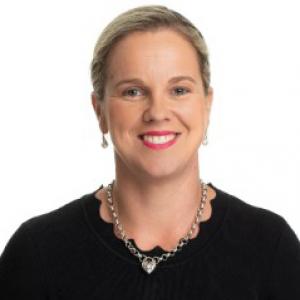Super and Death for Lawyers: Unravelling the Aftermath - 5 program on-demand webinar series
About the webinar series
While superannuation is primarily designed to secure retirement, it often leaves a substantial financial legacy upon your passing. In this five part webinar series, learn directly from the experts as they dive deep into the rules governing the distribution of these funds. Explore strategies for keeping assets within the superannuation system, ensuring wealth distribution aligns precisely with your intentions, and minimizing tax liabilities along the way. It also examines keeping control of an SMSF following incapacity or death, as well as the roles BDBNs and reversionary pensions can play in ensuring the smooth distribution of death benefits.
Training for as many staff as you want - no additional cost!
A single purchase entitles your company to access the on demand webinars online as you require them for as many training sessions and for as many staff as you want.
On demand webinars and technical materials
You will have access not only to the on demand webinars but also to the detailed technical materials prepared by members of the faculty for this series.
What you get
This on demand webinar series includes the following components:
- Online access to the on-demand webinar programs. Programs average 1 hour each in length.
- The programs were recorded in October/November 2023 and are now available.
- Online access to the technical support papers and/or powerpoint presentations accompanying each program.
The Programs
Program 1: Decoding Death Benefits: Determining the Recipients
Unlocking who can, and should, receive death benefits may not be as straightforward as it seems. Traditionally, the answer was simple: a child or a spouse classified as a SIS dependent. However, the definition of these terms has become increasingly complex. Moreover, if you wish to allocate death benefits to the estate, what avenues are available to you? And when can your death benefits go to others on the basis of financial dependency or independency? This session delves into these issues, including:
- Understanding the classes of SIS dependant
- who is a child? Adopted and foster children, step children and former step children
- who is a spouse?
- financial dependency – grandchildren, stepchildren, companions in old age
- interdependency – who qualifies?
- Understanding the difference between a SIS dependant and a tax dependant and why it’s important
- Channelling benefits to the estate:
- rationale behind this choice
- the power of a testamentary trust
- super proceeds trust as an alternative option
Program 2: Super Death Benefits: Untangling the Tax Web for Effective Planning
The effective succession planning of superannuation assets requires a comprehensive understanding of the intricate tax implications surrounding super death benefits. This session aims to untangle the complex tax web woven around these benefits, providing an in-depth analysis of the various tax treatments, considerations, and strategies involved. It covers:
- Distinguishing the taxable component and concessional contributions
- Identifying the tax-free component and non-concessional contributions
- Strategies for reducing the taxable component
- Life insurance proceeds – how and why they are different
- Defined benefit funds – how are they different?
- Practical case studies involving distributions to tax dependents and non-tax dependents
Program 3: How Binding are Binding Death Benefit Nominations?
With superannuation balances forming a considerable amount of a person’s wealth on death in many cases, the issue of who is to be the recipient of those amounts can be the subject of intense scrutiny. A binding death benefit nomination (BDBN) can be the tool that channels the deceased’s member balance to their desired recipient, however, sometimes the road isn’t as smooth as some would like. This session explores the issue, including:
- When can a BDBN be used and who can be included as potential beneficiaries?
- Why are some BDBNs considered invalid at crunch time?
- Recent cases where BDBNs have been challenged, including:
- Application by Ellasil Pty Ltd [2023] VSC 69
- Hill v Zuda Pty Ltd [2022] HCA 21
- Can a BDBN that satisfies all technical requirements, be successfully challenged?
- Can a change of trustee affect a BDBN?
- The interaction of the BDBN with the estate plan, including:
- consequences if one practitioner advising on wills and another on BDBNs, are not on the same page
- What are the consequences if a BDBN is ruled invalid?
- Checklist to assist in ensuring validity of a BDBN
Program 4: Pensions: A Path to Secure Estate Planning?
Are BDBNs the only way to ensure the smooth distribution of death benefits? Reversionary pensions offer an alternative. This session delves into the practical application of reversionary pensions as a tool for estate and tax planning. It covers:
- Reversionary pensions – advantages and drawbacks
- Who can be a reversionary pensioner?
- Documenting reversionary pensions – best practices and essential considerations
- Reversionary pensions and the transfer balance cap
- what if the reversionary pension could lead to a breach?
- what are the implications of a breach?
- Impact on total superannuation balance of recipient and implications
- Case study involving reversionary pensions in blended families
- safeguarding the interests of the second spouse and children of the first marriage
- commutation of reversionary pensions
- what happens to the account balance when the reversionary pensioner dies?
Program 5: Who’s Running the Show: Keeping Control of an SMSF
On the setting up of an SMSF, all members are required to be individual trustees or directors of a corporate trustee. However, life events such as incapacity and death, require someone to fill the shoes of the replaced individual. This session explores how this works in practice, including:
- What role does a fund’s deed and company constitution, if applicable, have in determining a replacement trustee?
- How significant is the role of shareholder of an SMSF corporate trustee?
- Enduring power of attorneys (EPOAs):
- are these the automatic replacements for a member who loses capacity? (SMSFR 2010/2)
- course of action to take if no EPOA arranged or probate/letters of administration are delayed
- Lessons from cases (Katz v Grossman [2005] NSWSC 934; Ioppolo and Hesford v Conti [2013] WASC 389)
- How is the fund taxed if a breach of the required number of trustees appointed occurs?
- Checklist of action to take for trustee appointment:
- on incapacity of a member
- on death of a member
- Case study
- Best practice in providing for the transfer of control on death:
- harmonious family – one surviving spouse
- harmonious family – no surviving spouse
- warring siblings – no surviving spouse
- blended family – second spouse needs protection
- What provisions do you need:
- in the trust deed?
- in the will and the EPOA?
Presented By

Laura Hanrahan
Special Counsel, Hall & Wilcox Brisbane, Qld
Paul Salinas
Director, Artisan Legal Canberra, ACT
Nathan Yii
Principal Lawyer, Chartered Tax Advisor and SMSF Specialist Advisor, Nathan Yii Lawyers Melbourne, Vic
Jennifer Dixon
Practice Leader, Accredited Specialist Wills & Estates, Moores Melbourne, Vic.
Phil Broderick
Principal, Sladen Legal Melbourne, VicSpecial Offer
The full price for this series will be $1210.
If you buy the series by 31 October 2023 you will pay only $990 – a saving of $220.
Enquiries/Assistance
If you need assistance or have an enquiry, please do not hesitate to contact us on (03) 8601 7700 or email: [email protected]
